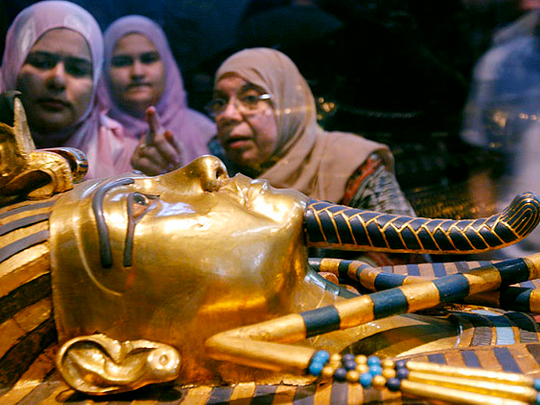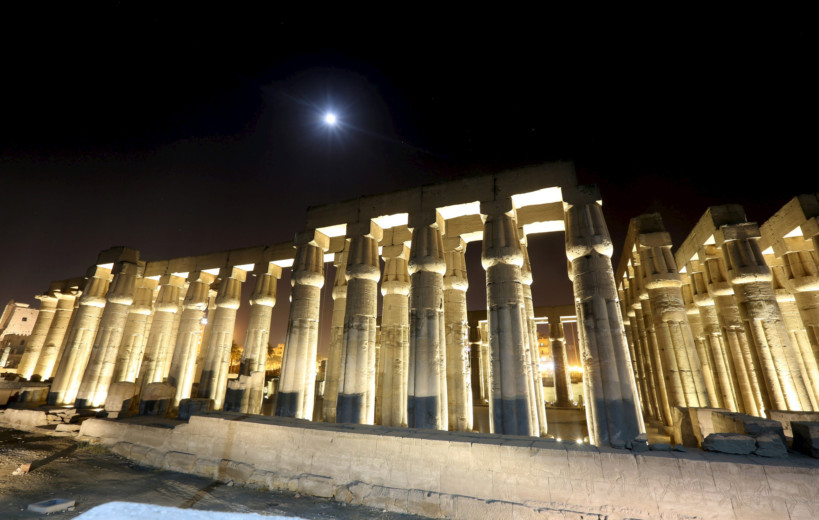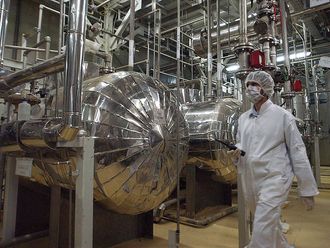
Luxor: Scans in King Tutankhamun’s tomb in Egypt’s Valley of the Kings point to a hidden chamber, the country’s antiquities minister said Saturday, possibly heralding the discovery of Queen Nefertiti’s tomb.
“We can now say that we have to find behind the burial chamber of King Tutankhamun another chamber, another tomb,” Mamdouh Al Damati said at a press conference.
He said experts were “approximately 90 per cent” sure. The tests were spurred by a study by British archaeologist Nicholas Reeves that said Nefertiti’s lost tomb may be hidden in an adjoining chamber.
Speaking at the same press conference, Reeves said the initial results could bear out his theory. “Clearly it does look from the radar evidence as if the tomb continues, as I have predicted,” he said.
“The radar, behind the north wall [of Tutankhamun’s burial chamber] seems pretty clear. If I am right it is a continuation - corridor continuation - of the tomb, which will end in another burial chamber,” he said.
“It does look indeed as if the tomb of Tutankhamun is a corridor tomb... and it continues beyond the decorated burial chamber,” he added. “I think it is Nefertiti and all the evidence points in that direction.”
Al Damati emphasised that a Japanese expert working with the archaeologists needed a month to analyse the scans.
Mysterious period
Discovery of Nefertiti, whose chiseled cheek-bones and regal beauty were immortalised in a 3,300-year old bust now in a Berlin museum, would shed fresh light on what remains a mysterious period of Egyptian history despite frenzied international interest.
“There is, in fact, an empty space behind the wall based on radar, which is very accurate, there is no doubt. We cannot say at this point, however, the size of the space behind the wall,” Japanese radar specialist Hirokatsu Watanabe told the news conference.
Experts carried out a preliminary scan of the tomb earlier this month using infra-red thermography to map out the temperature of its walls.
Al Damati said at that time that the analysis showed “differences in the temperatures registered on different parts of the northern wall” of the tomb.
But the minister and Reeves had differed on whose mummy they expected to find.
According to Reeves, professor of archaeology at the University of Arizona, Tutankhamun, who died unexpectedly, was buried hurriedly in an underground chamber probably not intended for him. His death would have forced priests to reopen Nefertiti’s tomb 10 years after her death because the young pharaoh’s own mausoleum had not yet been built.
But Al Damati believes that such a chamber, if found adjoining Tutankhamun’s tomb, may contain Kiya, a wife of the pharaoh Akhenaten.
Nefertiti played a major role in 14th century BC Egypt. According to Zahi Hawass, the country’s former antiquities minister: “Nefertiti will never be buried in the Valley of the Kings,” he said. “The priests would never allow her to be buried in the Valley of the Kings.”













